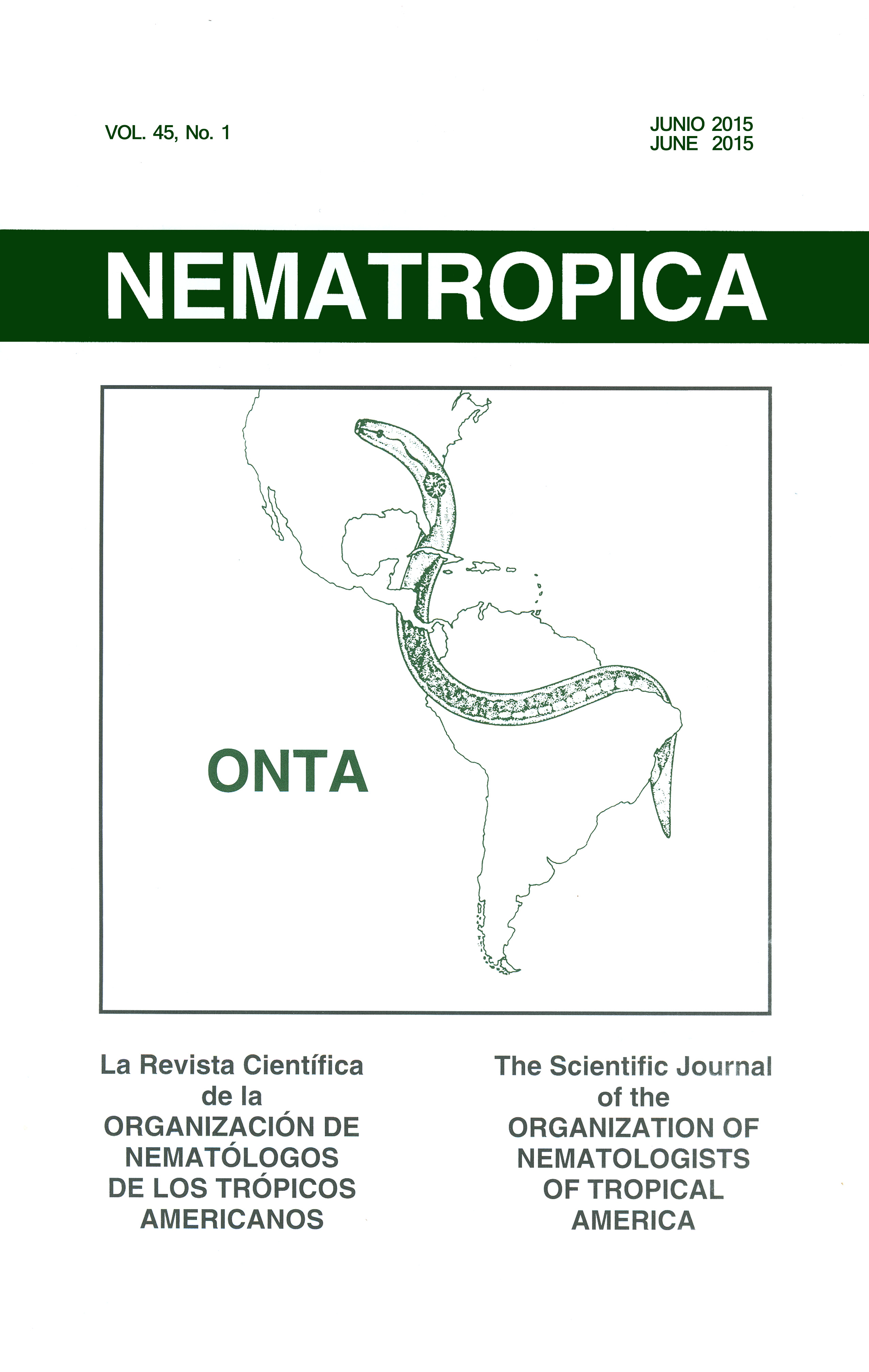SEASONAL VARIATION AND COTTON-CORN ROTATION IN THE SPATIAL DISTRIBUTION OF ROTYLENCHULUS RENIFORMIS IN MISSISSIPPI COTTON SOILS
Keywords:
cotton, cotton-corn rotation, horizontal distribution, population number, reniform nematode, Rotylenchulus reniformis, season, vertical distributionAbstract
Horizontal and vertical distribution of the reniform nematode, Rotylenchulus reniformisLinford and Oliveira, was examined over a 3-yr period in Mississippi cotton soils. Two naturally infested cotton fields (8.1 ha each) were examined to determine the effects of continuous cotton production and a cotton-corn rotation system on the nematode population dynamics in two different seasons (spring and fall). Sixteen grids (0.4 ha) were established in each field. Both fields were grid-mapped with 16 points on 0.4-ha grids using a Global Positioning System (GPS). A single soil core, 5.08-cm diameter × 121.92 cm deep, was collected from each grid intersection and divided into 8 sample depths. Reniform nematodes were found at each of 16 geo-referenced sample sites and in all of the eight sampling depths. The number of reniform nematodes varied from 10 to 2,500 per 100 cm3 soil across sample sites. The nematode population appeared to have a non-clustered horizontal distribution across both the continuous cotton production and cotton-corn rotation fields. Reniform nematode numbers also differed by season. The sampling time and depth were associated with nematode density. In the continuous cotton production field, nematode numbers found in the upper soil profile were higher in the fall than in the spring. In the cottoncorn rotation field after corn was planted, more nematodes were recovered in the lower soil profiles in the fall.
Corn and cotton rotations affected both nematode numbers and distribution in relation to soil depth. The recovery of reniform nematodes deep in the soil profile may help explain why this nematode is capable of reaching high levels in the soil after a single year rotation with corn.

